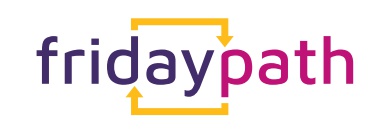 I facilitated a retrospective on decision making with a team that I believed to be slowed down by busy schedules and consensus-driven decision making. As normal, I was not entirely correct. The discussion was valuable.
I facilitated a retrospective on decision making with a team that I believed to be slowed down by busy schedules and consensus-driven decision making. As normal, I was not entirely correct. The discussion was valuable.
Retrospective construction
We opened with an appreciation shower. The group had been apart for a while and it felt like we needed to reunite. They did well!
We went on to brainstorming what kinds of decisions we make. I nudged to make sure that we covered all of the major topics that I had thought of earlier and pushed to break things down into logical categories for the next exercise.
We proceeded to categorize how much we wanted to be involved in each decision.
- Pink - Decider - Need to agree to the final decision
- Blue - Consulted - Want to have their opinion heard, but don’t need to be involved in the final decision.
- Yellow - Informed - Would like to know what is decided.
- no sticky - Don’t need to be involved with the decision.
The results of that process are in the image. (Yes, that is the back of wrapping paper. Reduce/reuse/recycle…)
Discussion ensued about the pink stripe of decision involvement. Some team members wanted to be involved in most decisions. Some members wanted to be informed about most decisions. I (C, bottom row in the image) want to only know about the ones that affect me as a peripheral member.
The final phase was to discuss actions, which was cut short with our time window closing. I expect suggestions will appear for weeks.
What I loved
- We calmly talked about how we decide as a group. It felt removed from points of contention seen in specific decisions.
- We talked about future decisions we will make and proposed methods for handling them.
- We found that lack of a response does not necessarily mean no; and that a deadline for a response/veto of the suggestion is acceptable.
What I’d do differently
- Schedule the discussion for a time when we have extra time for slow starts, interruptions, and lingering discussions about changes we could make.
- Stop assuming that more people being involved slows down the process. It will if it means adding yet another hand-off/signature to the process, but being a “Decider” does not reflect the level of involvement desired. The level of involvement could be anything from a researcher of possible options to a light-weight approval of the final option. It could mean that the person is willing to actively help speed up the decision.
- Introduce what we are going to do with the decision categories before generating the categories to reduce the amount of nudging and pushing to conform with the next exercise.
- Add a decision category for “Vetoer” as a step between Decider and Consulted.
- Consider adding a decision category for “Researcher” above decider for active involvement in exploring options.


